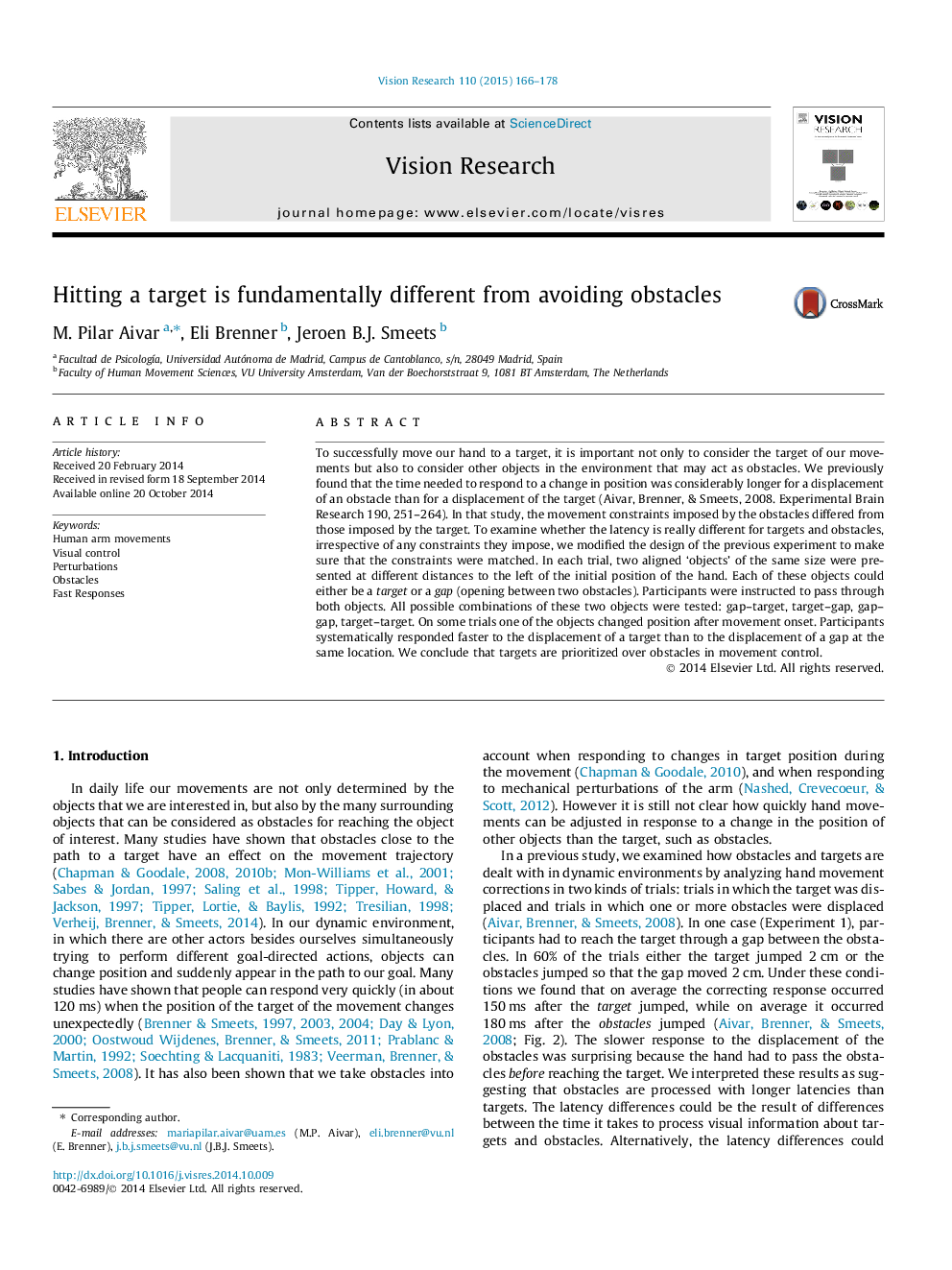| کد مقاله | کد نشریه | سال انتشار | مقاله انگلیسی | نسخه تمام متن |
|---|---|---|---|---|
| 6203184 | 1603185 | 2015 | 13 صفحه PDF | دانلود رایگان |
- Hand movements are corrected in response to jumps of targets and obstacles in the path.
- Corrections are faster for target jumps although all jumps pose similar constraints.
- Target jumps seem to capture the hand while jumps of obstacles do not do so.
- Responses to perturbations of targets and obstacles appear to be different.
To successfully move our hand to a target, it is important not only to consider the target of our movements but also to consider other objects in the environment that may act as obstacles. We previously found that the time needed to respond to a change in position was considerably longer for a displacement of an obstacle than for a displacement of the target (Aivar, Brenner, & Smeets, 2008. Experimental Brain Research 190, 251-264). In that study, the movement constraints imposed by the obstacles differed from those imposed by the target. To examine whether the latency is really different for targets and obstacles, irrespective of any constraints they impose, we modified the design of the previous experiment to make sure that the constraints were matched. In each trial, two aligned 'objects' of the same size were presented at different distances to the left of the initial position of the hand. Each of these objects could either be a target or a gap (opening between two obstacles). Participants were instructed to pass through both objects. All possible combinations of these two objects were tested: gap-target, target-gap, gap-gap, target-target. On some trials one of the objects changed position after movement onset. Participants systematically responded faster to the displacement of a target than to the displacement of a gap at the same location. We conclude that targets are prioritized over obstacles in movement control.
Journal: Vision Research - Volume 110, Part B, May 2015, Pages 166-178
